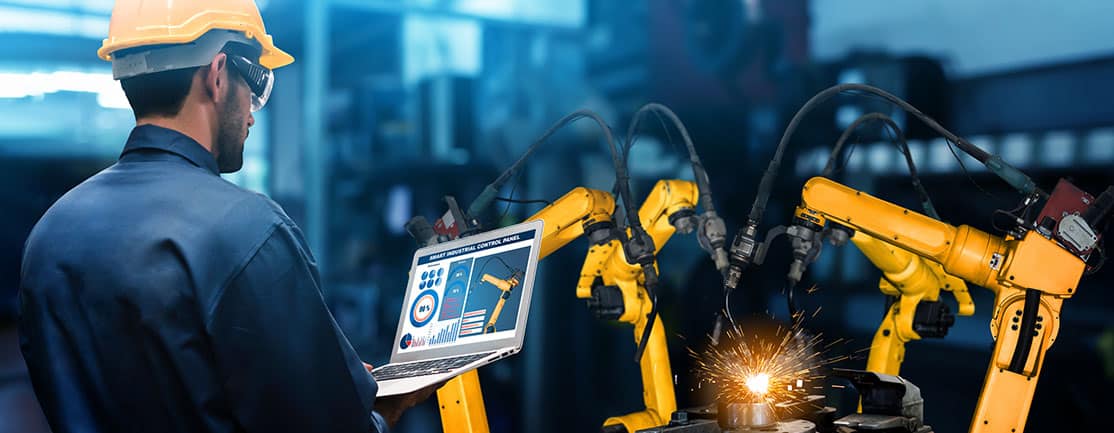
Manufacturing is going digital. Smarter robots, 3-D printing, big data, machine-to-machine communication and mobility are all part of a wave of converging technologies playing into Industry 4.0. It is gaining traction across the globe as manufacturing organizations seek to harness the benefits of a modern supply chain. In this blog, Dr Dino Petrarolo, Senior Vice President, CCi, shares key insights into what is required for organizations to truly benefit from digital manufacturing.
For manufacturers, the shift to digital has brought about an abundance of new tools designed to build smarter, leaner factories, creating opportunities to develop ground-breaking products, materials and techniques. At the same time, manufacturing companies are becoming more complex and globally dispersed, accelerating the need for increased innovation, collaboration and visibility. Manufacturers therefore face unprecedented challenges as these global economic forces drive competition and open opportunities in new markets.
So how will operational excellence prepare us for digital manufacturing?
Firstly, we need to look across industries to see how these trends and milestones play out in practice. The convergence of applications in smartphones is similar to the convergence in equipment technology: In the beverage industry, for example, three different machines were traditionally used to rinse, fill and cap a bottle; for a while now the work is being done by one integrated machine (‘super block’) at rates often exceeding 17 bottles per second.
Technology will undoubtedly simplify things but will also create a level of abstraction that can be wasteful or even dangerous.
Although the world of work is subject to continuous change driven by globalization, new technology, and demands from society, there will always be some principles that remain. As a simple example, we used to check the oil in a motor vehicle when going to a filling station. This action has now been replaced by sophisticated detection sensors that warn us when the oil level is low, but the fact that the vehicle must not run without oil remains. In other words, technology does not replace the need for understanding. Of course, electric vehicles will soon start changing much of this too.
Technology will undoubtedly simplify things but will also create a level of abstraction that can be wasteful or even dangerous. Consider monitoring screens used in control rooms: they can keep operators away from the real equipment performing the task, lulling them into a false sense of security that ‘all is fine’ even if, for example, sensors don’t function properly. (Product, energy and/or water could be ‘flushing to drain’ due to faulty valves or device, creating huge wastage and costs.)
Embrace new technology with a maturity-based approach
As manufacturing companies become more complex, flexibility, efficiency and improved collaboration are required to develop and manufacture an increasing number of products to meet rapidly changing demands. CEOs recognize that to achieve these business objectives, and be competitive in a global manufacturing environment, their organizations need to do a better job of getting the right information to the right people at the right time, in an integrated format in order to make quick, smart business decisions. The organization must become more responsive to changing market and operational conditions, without sacrificing prevailing efficiency.
Fundamentally, an incremental, maturity-based approach to operational excellence prepares the organization to adopt and adapt new technologies at the correct pace. If operational excellence is not at a sufficiently high level, your organization will struggle to gain the benefits of any new technology. In fact, a McKinsey research report found that companies with top values in operational KPIs on average achieve an EBIT margin of 7% p.a. and sales growth of 10% p.a. Companies with a need for operational improvement, however, only achieve an EBIT margin of approximately 5% and likewise sales growth of 5% p.a.
As such, a maturity-based approach is critical for organizations looking to move towards the next-generation of production systems, also termed digital operating systems. To truly harness the benefit of a digital supply chain, organizations must ensure they match their digital transformation plans with their state of operational maturity.
Download the white paper Digital operating systems: The next-generation of production systems for the building blocks of a successful transition to DOS.
People engagement the key to true convergence
While technology and network convergence have occurred within many manufacturing companies, the bigger challenge is often organizational and cultural convergence. This convergence is essential to truly break down barriers and eliminate silos of information and isolated systems. Only then can a manufacturing organization align technology with its business objectives and become more responsive and efficient.
You can speed up the pace, but you cannot avoid the growth phases.
Thus competitive capability will not necessarily come from automation or technology, but rather from the adaptation and creative use thereof. Already we are seeing that the fundamental people engagement practices — teamwork, leadership, goal alignment, and so on — are becoming even more important as technology becomes more sophisticated.
For a manufacturing organization to harness the full benefits of next-generation technologies a culture shift needs to take place, ensuring all employees are aware of and support the transformation and the skills development and growth needed to make it a reality.
Done correctly, the adoption of new trends and technologies will certainly help accelerate maturity development in organizations. However, just like a child needs to go through phases of development before becoming an adult, the same is true for organizations: You can speed up the pace, but you cannot avoid the growth phases.
Download How-to guide: Managing change across the organization to find out how to successfully lead and manage the transition to digital in your organization.
